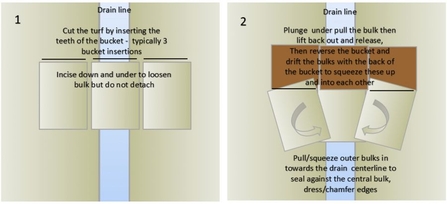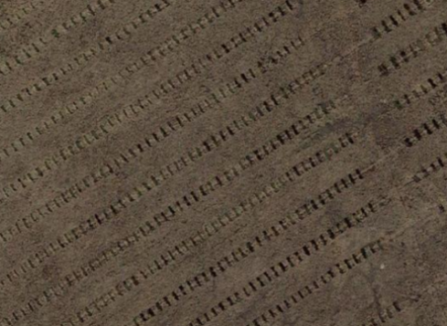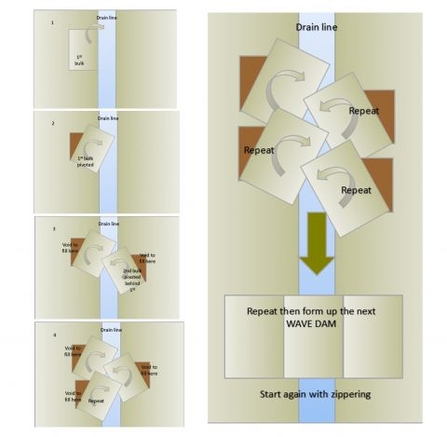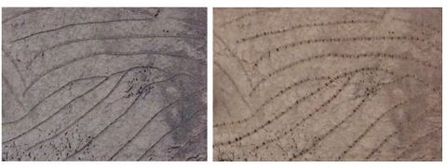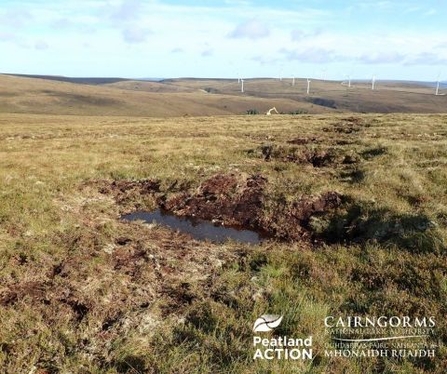Working with the combined wave damming and zipper re-profiling techniques
By Matt Watson (Peatland ACTION Project Officer at Cairngorms National Park)
Wave damming
In early 2016 Scottish Power Renewables reported on a new grip blocking technique they’d developed in conjunction with their consultants SCL Ltd. This wave damming technique used a rapid damming method to produce a high frequency of dams along grip lines that look like ripples or waves. Put simply this approach pulls bulks of peat backwards and bunches it up to form a dome shaped dam taking around 1-2 minutes per feature (see diagram).

